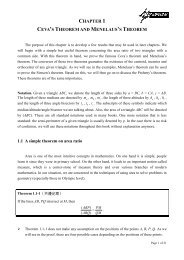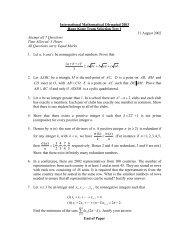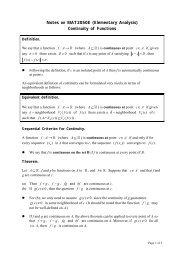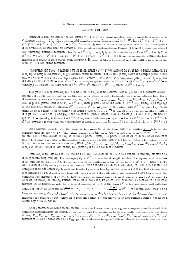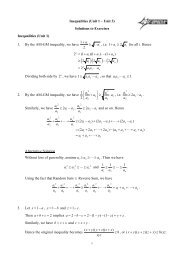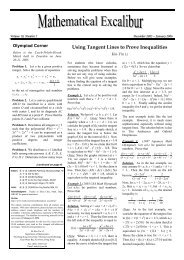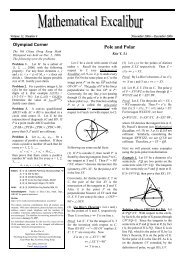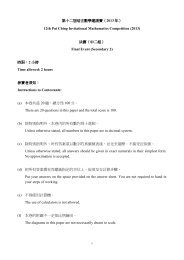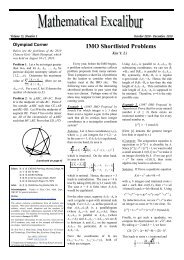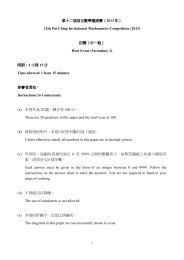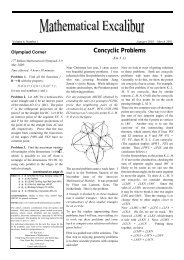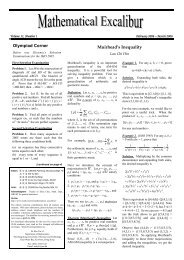An introduction to analytic number theory
An introduction to analytic number theory
An introduction to analytic number theory
- No tags were found...
You also want an ePaper? Increase the reach of your titles
YUMPU automatically turns print PDFs into web optimized ePapers that Google loves.
3.2 Estimates of ζ and ζ ′Our goal now will be <strong>to</strong> establish some estimates of ζ (and its derivative) on the lineRe s = 1, which is a key <strong>to</strong> proving the prime <strong>number</strong> theorem. This will be based on theintegral approach of continuing ζ that we described above.Lemma 15. For each σ 0 ∈ (0, 1] and each ε > 0, there exists a constant c ε such that(a) |ζ(s)| ≤ c ε |Im s| 1−σ 0+ε for all s with Re s ≥ σ 0 and |Im s| ≥ 1.(b) |ζ ′ (s)| ≤ c ε |Im s| ε for all s with Re s ≥ 1 and |Im s| ≥ 1.Proof. To see that this is true, first observe that the second assertion follows from the firstby Cauchy’s estimates: if Re s ≥ 1 and |Im s| ≥ 1, then given ε > 0, Cauchy’s estimatefor holomorphic functions gives|ζ ′ (s)| ≤ 1ε/2 max |ζ(t)|,|t−s|=ε/2so applying (a) with σ 0 ≥ 1 − ε/2 and ε/2 in place of ε we have|ζ ′ (s)| ≤ c ε/2(|Im s| + ε/2) 1−(1−ε/2)+ε/2ε/2= O(|Im s| ε )with an implicit constant depending on ε. For the first assertion it suffices <strong>to</strong> considerthe case where ε is small, say 1 − σ 0 + ε < 1. In this case the inequality follows from twoestimates of δ n (s), one being the estimate|δ n (s)| ≤ |s|nRe s+1which we already alluded <strong>to</strong>, the other being|δ n (s)| ≤ 2n Re swhich holds trivially by estimating the integrand of the integral defining δ n . Now takinga geometric mean of these two estimates, for any η ∈ [0, 1], we have|δ n (s)| ≤Taking η = 1 − σ 0 + ε, we have( |s|n Re s+1 ) η ( 2n Re s ) 1−η≤ 2|s|ηn σ 0+η .|δ n (s)| ≤ C |Im s|1−σ 0+εn 1+ε .20




